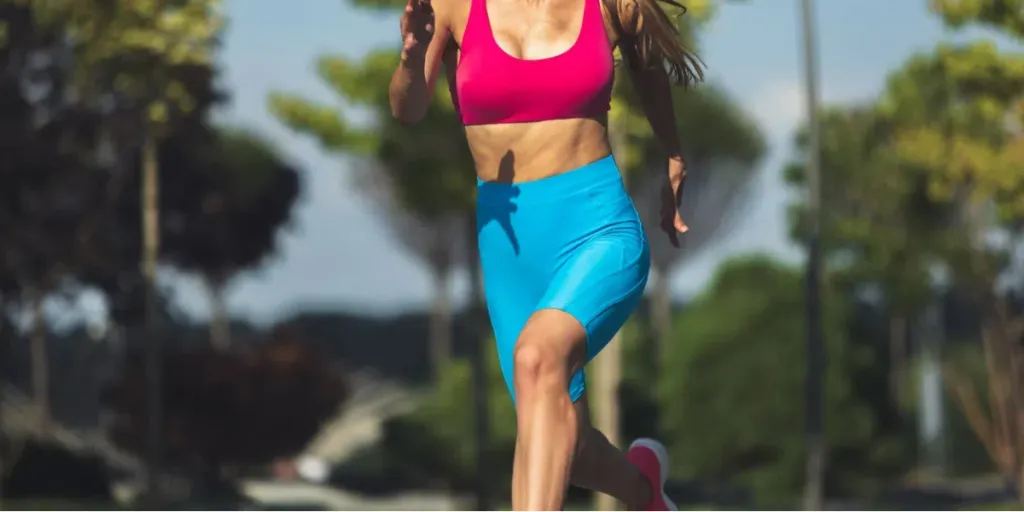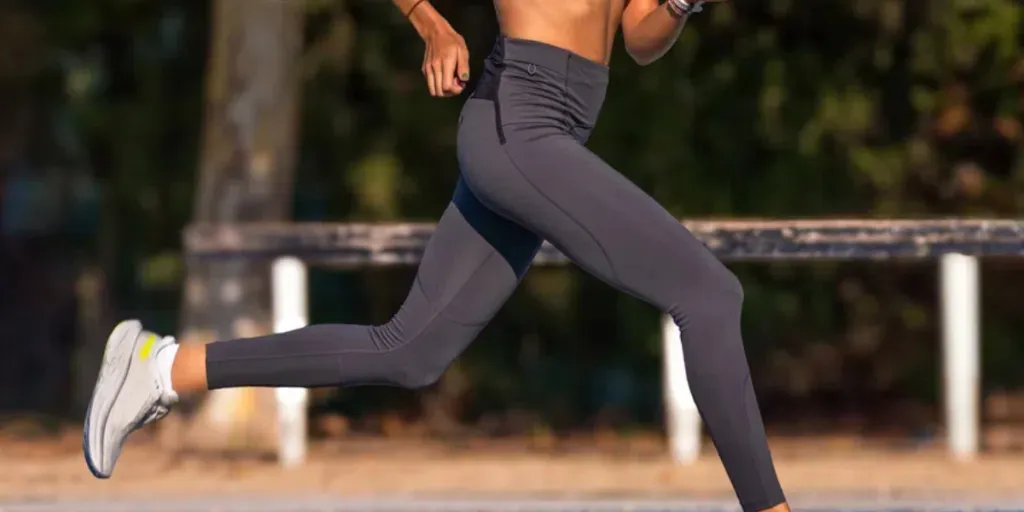Aerobic running has surged in popularity, becoming a staple in fitness routines worldwide. This trend is not only reshaping the sports and accessory industry but also influencing market dynamics and consumer behavior. In this article, we delve into the market overview, highlighting the growing popularity of aerobic running, key market players, and global demand and regional trends.
Table of Contents:
– Market Overview
– Innovative Materials and Design in Aerobic Running Gear
– Technological Features Elevating Aerobic Running
– Benefits and Performance Enhancements
– Seasonal Trends and Customization Options
Market Overview

Growing Popularity of Aerobic Running
Aerobic running has become a global phenomenon, driven by a growing awareness of health and fitness. According to a report by Research and Markets, the global athletic footwear market, which includes aerobic shoes, was valued at USD 119.69 billion in 2023 and is projected to reach USD 187.12 billion by 2030, growing at a CAGR of 6.59%. This growth is fueled by an increasing number of people participating in sports and outdoor activities, as well as a rising preference for lightweight and comfortable footwear.
As people sought ways to stay active while maintaining social distancing, running emerged as a convenient and effective exercise. This trend is expected to continue, with the global running apparel market projected to grow from $13.07 billion in 2023 to $16.30 billion by 2028, at a CAGR of 4.51%, according to WGSN.
Key Market Players and Their Influence
The aerobic running market is dominated by several key players who have a significant influence on market trends and consumer preferences. According to a report by Research and Markets, leading companies in the athletic footwear market include Nike, Adidas, ASICS, Puma, and Under Armour. These companies are known for their innovative products and strong brand presence, which help them maintain a competitive edge.
Nike, for instance, has consistently introduced cutting-edge technologies in its running shoes, such as the Nike Air Zoom series, which offers enhanced cushioning and support. Adidas, on the other hand, has focused on sustainability, launching products like the Ultraboost made from recycled ocean plastic. ASICS is renowned for its GEL technology, which provides superior shock absorption, while Puma and Under Armour continue to innovate with lightweight and breathable materials.
Global Demand and Regional Trends
The demand for aerobic running gear varies across regions, influenced by factors such as cultural preferences, economic conditions, and climate. According to Statista, the United States is the largest market for running footwear, with projected revenue of USD 4.1 billion in 2024. The market is expected to grow at a CAGR of 2.37% from 2024 to 2029, driven by a strong fitness culture and high disposable income.
In Europe, Germany is a significant market, expected to generate USD 295.5 million in revenue in 2024. The market is characterized by a preference for high-quality craftsmanship and sustainable production practices. The annual growth rate for the running market in Germany is projected to be 0.83% from 2024 to 2029.
The Asia-Pacific region is also witnessing rapid growth in the aerobic running market, driven by increasing health awareness and rising participation in sports activities. Countries like China, Japan, and India are emerging as key markets, with a growing middle class and increasing disposable income contributing to the demand for high-performance running gear.
Innovative Materials and Design in Aerobic Running Gear

High-Performance Fabrics for Enhanced Comfort
The evolution of aerobic running gear has seen significant advancements in the materials used, with high-performance fabrics taking center stage. These fabrics are designed to enhance comfort by being lightweight, breathable, and moisture-wicking. According to a professional report, the Nathan Pinnacle 12L hydration vest exemplifies this trend with its use of air-permeable materials such as mesh and other thin, well-ventilated fabrics. These materials are strategically placed along the back panel, shoulder straps, and underarm panels to maximize breathability and ventilation, ensuring that runners remain cool and comfortable even during intense workouts.
Ergonomic Designs for Optimal Movement
Ergonomic design is another critical aspect of modern aerobic running gear. The goal is to create gear that moves seamlessly with the body, reducing friction and enhancing performance. Running vests, for instance, are designed to sit flush against the torso and extend under the arms, providing a snug fit that minimizes bounce and unwanted movement. The Arc’teryx Norvan 7 is a prime example, featuring underarm storage and side dump pockets that allow for easy access to essentials without disrupting the runner’s stride. This focus on ergonomic design ensures that runners can maintain optimal movement and efficiency throughout their run.
Sustainable and Eco-Friendly Materials
Sustainability has become a significant consideration in the design of aerobic running gear. Manufacturers are increasingly turning to eco-friendly materials to reduce their environmental impact. These materials include recycled fabrics and biodegradable components that offer the same high performance as traditional materials but with a lower ecological footprint. The shift towards sustainable materials is not only beneficial for the environment but also resonates with the growing number of consumers who prioritize eco-conscious products.
Technological Features Elevating Aerobic Running

Smart Wearables and Fitness Trackers
The integration of technology into aerobic running gear has revolutionized the way runners track and improve their performance. Smart wearables and fitness trackers are now commonplace, providing real-time data on metrics such as heart rate, distance, pace, and calories burned. These devices enable runners to monitor their progress, set goals, and make data-driven adjustments to their training routines. The use of smart technology in running gear represents a significant leap forward in enhancing the overall running experience.
Advanced Cushioning and Support Technologies
Advancements in cushioning and support technologies have also played a crucial role in elevating aerobic running gear. Modern running shoes, for example, feature innovative cushioning systems that provide superior shock absorption and energy return. This not only enhances comfort but also reduces the risk of injury by providing better support to the feet and joints. The development of these advanced technologies has made it possible for runners to push their limits while maintaining optimal comfort and safety.
Breathable and Moisture-Wicking Innovations
Breathability and moisture-wicking capabilities are essential features of high-performance running gear. These innovations help to regulate body temperature and keep the skin dry, even during intense physical activity. The Nathan Pinnacle 12L hydration vest, for instance, incorporates padded mesh with channels for airflow, which enhances breathability compared to thinner fabrics. This focus on moisture management ensures that runners remain comfortable and focused, regardless of the conditions.
Benefits and Performance Enhancements

Health and Fitness Advantages of Aerobic Running
Aerobic running offers numerous health and fitness benefits, making it a popular choice for individuals looking to improve their overall well-being. Regular aerobic running can enhance cardiovascular health, increase lung capacity, and improve endurance. It also helps in weight management by burning calories and boosting metabolism. Additionally, aerobic running strengthens muscles and bones, reducing the risk of osteoporosis and other age-related conditions.
Performance Metrics and Improvement
Tracking performance metrics is essential for runners looking to improve their efficiency and achieve their goals. Fitness trackers and smart wearables provide valuable data on various aspects of running, such as pace, distance, and heart rate. By analyzing this data, runners can identify areas for improvement and tailor their training programs accordingly. This data-driven approach to training helps runners to optimize their performance and achieve better results over time.
Psychological and Emotional Benefits
Beyond the physical benefits, aerobic running also offers significant psychological and emotional advantages. Running has been shown to reduce stress, anxiety, and depression by releasing endorphins, which are natural mood enhancers. It also provides a sense of accomplishment and boosts self-esteem, contributing to overall mental well-being. The psychological benefits of running are an important aspect of why many individuals incorporate it into their daily routines.
Seasonal Trends and Customization Options

Adapting Gear for Different Seasons
Running gear must be adaptable to different seasons to ensure comfort and performance year-round. In colder months, runners may opt for gear with thermal insulation and windproof materials to stay warm. Conversely, in warmer weather, lightweight and breathable fabrics are essential to prevent overheating. The ability to adapt running gear to seasonal changes is crucial for maintaining optimal performance and comfort throughout the year.
Customizable Features for Personalized Fit
Customization is a growing trend in the running gear industry, with many products offering adjustable features to ensure a personalized fit. Hydration vests, for example, often come with adjustable straps and multiple sizing options to accommodate different body types and preferences. This focus on customization allows runners to achieve a perfect fit, enhancing comfort and reducing the risk of chafing and discomfort during long runs.
Trendy Designs and Aesthetic Appeal
While functionality is paramount, the aesthetic appeal of running gear should not be overlooked. Trendy designs and vibrant colors can enhance the overall running experience by boosting confidence and motivation. Many brands now offer running gear that combines high performance with stylish designs, catering to the preferences of modern runners who value both form and function.
Conclusion
The advancements in materials, design, and technology have significantly elevated the quality and performance of aerobic running gear. From high-performance fabrics and ergonomic designs to smart wearables and advanced cushioning technologies, modern running gear offers numerous benefits that enhance the overall running experience. As the industry continues to innovate, the future of aerobic running gear looks promising, with a continued focus on sustainability, customization, and cutting-edge technology.




